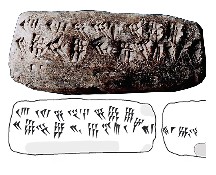| n | n(n-1)(n-2)...(2)1 | = | n! | ||||||||
| 1 | 1 | = | 1 | ||||||||
| 2 | 2(1) | = | 2 | ||||||||
| 3 | 3(2)(1) | = | 6 | ||||||||
| 4 | 4(3)(2)(1) | = | 24 | ||||||||
| 5 | 5(4)(3)(2)(1) | = | 120 | ||||||||
| 6 | 6(5)(4)(3)(2)(1) | = | 720 |
| Value n | n! | n!! | ||
| 2 | 2 | 2 | ||
| 4 | 24 | 8 | ||
| 6 | 720 | 48 | ||
| 8 | 40320 | 384 | ||
| 10 | 3628800 | 3840 | ||
| 12 | 479001600 | 46080 | ||
| 14 | 87178291200 | 645120 | ||
| 16 | 20922789888000 | 10321920 |

| 1 April 2009 Version | http://www.cs.ucla.edu/~klinger/size.html |
| ©2009 Allen Klinger |